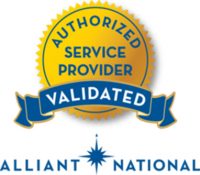Explaining the Title Commitment!
But First, Why Do I Even Need Title Insurance?
For most buyers, a home purchase is the single largest investment they will ever make, and having an Owner’s Title Insurance Policy, protects you, the owner, against a loss that may arise by reason of a defect in your title. Think: forged documents, fraud, failure of all owners to join in conveyance, liens for unpaid taxes, and the list goes on.
Got it! Now onto the “Title Commitment”:
Your title team will issue what is known as their title commitment shortly after your contract is receipted. The title commitment is just that, a commitment or promise by the title company and its underwriter to issue a title insurance policy and defend your title if all the terms and conditions of the commitment are met prior to closing. There are various schedules in the commitment, you can best remember those by reciting the alphabet: A, B, C, D.
Schedule A:
• “Actual Facts”
• Schedule A describes what the title company is proposing to insure.
• Here you will find an “effective date” which is the date up to which property/public records were searched for any relevant information.
• Policy Coverage Amount – on a sale, this will be the sales price. On a refinance, this will be the loan amount for a Lender’s Title Policy.
• You will also see the proposed buyer names, the current owner’s name, and the full and accurate legal description of the property.
Schedule B:
• “Borders, Boundaries, and Buyer Notification”
• Schedule B contains a preprinted list of standard exceptions that the title policy will not cover.
• Schedule B will also list matters specific to the transaction. These can include, but are not limited to, subdivision restrictive covenants, easements, mineral reservations, building setbacks, and any boundary or intrusion matters brought to light by a survey.
• It is important to remember, a title company can only make you aware of these exceptions, they cannot advise as to the implications an exception may have related to your future use of the property, for that you should seek legal counsel.
Schedule C:
• “Curative/Checklist”
• Schedule C will list any requirements that must be satisfied before closing and issuance of a title policy.
• Often these matters are to be satisfied by the Seller before transferring ownership to the Buyer. While the seller is primarily responsible for satisfying these items, the title company is there to guide and assist.
• These requirements may include, but are not limited to, outstanding mortgages, mechanic’s or tax liens, confirmation of marital status, confirmation that HOA assessments are paid current, copies of probates, requirements for a new survey, and other such encumbrances affecting the title.
Schedule D:
• “Disclosure”
• Schedule D discloses basic information regarding ownership of the title company and its underwriter.
• You will also find the title policy premium, or cost of the requested policies along with any endorsements, and a breakdown of how this premium may be divided amongst the various parties responsible for title examination and issuance.




